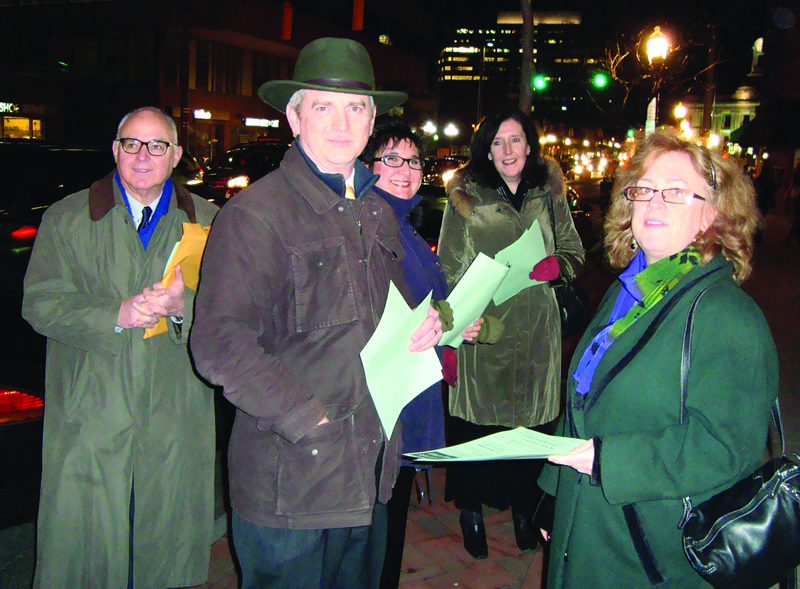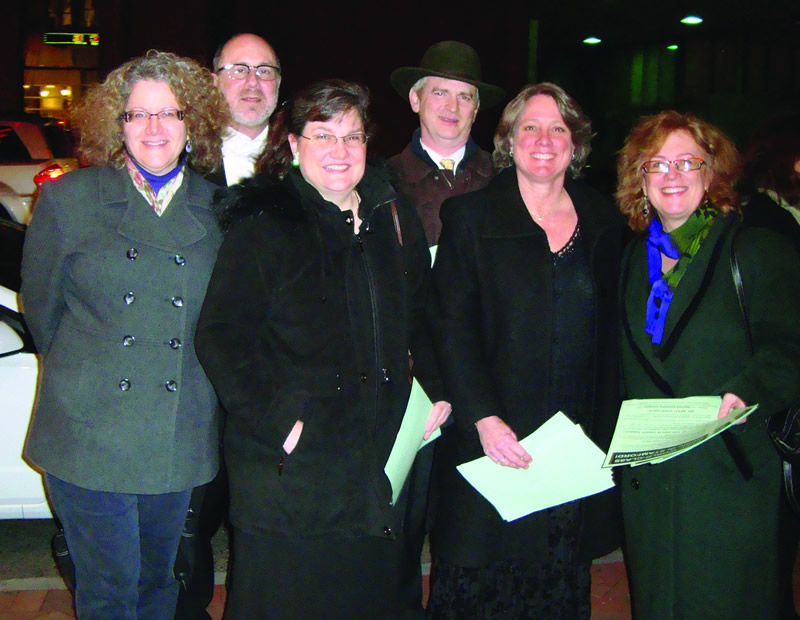Allegro
Showdown in Stamford
Volume 111, No. 4April, 2011
Stamford Symphony musicians as for fair pay, no two-tier system
It’s time for justice in Stamford. As members know, Local 802 recently expanded its jurisdiction to include Stamford, Conn., and its surrounding areas. But even before that, we were on the front line of a struggle with the management of the Stamford Symphony, whose musicians we represent.
The Stamford Symphony, unlike that of many performing arts ensembles in this economy, remains in a strong position financially. However, despite several major concessions offered by Local 802 – including a pay freeze – management’s unreasonable demands have resulted in the orchestra working without a contract since Sept. 1, 2010.
The Stamford musicians fully respect the institution’s need for fiscal responsibility, but even though they have offered to accept a one-year pay freeze and modest increases over the next two years, management is insisting on slashing compensation below current scale for one year and offering a performance rate of a mere one dollar above the current rate in the third and fourth contract years. This amounts to an increase of less than one half of 1 percent. The latest management proposals for rehearsal rates are also frozen for four years at a rate below musicians’ current rehearsal rates. All of this results in increases that do not even come close to keeping up with the cost of living.
EQUAL PAY FOR EQUAL WORK
The major stumbling block has been the two-tiered payment system insisted upon by management that would slash the wages of the freelance musicians who frequently substitute for regular members. The lower wages – a cut of 23 percent from the full rate – represent a devastating attack on freelancers; its acceptance will set a dangerous precedent for the entire field, creating a race to the bottom among orchestras that use freelance players. This inevitably will affect the livelihoods of all musicians, including the SSO’s rostered players, who rely on freelance work to supplement the small salary they receive from SSO. Under management’s proposal it will not be possible to sustain the quality of musicianship that audiences have come to expect from the Stamford Symphony Orchestra.
“This is a basic question of equal pay for equal work,” said longtime principal trumpeter Don Batchelder, who is also principal trumpeter of the New York City Opera Orchestra. “This is a fantastic orchestra, and all of us play as subs in lots of other ensembles. We all rely on a level playing field in terms of pay, wherever we work. Take that away, and you take away our ability to make a living.”
“Stamford Symphony CEO Barbara Soroca seems oblivious to the fact that the proposed two-tiered structure will irreparably harm this institution.” said Jay Blumenthal, Financial Vice President. “In fact, all of the members of the Stamford Symphony Orchestra earn a significant part of their livings substituting for musicians in other orchestras. If this sort of caste system proliferates, it will undermine the entire classical freelance community of musicians, making it impossible for even the most skilled musicians to support their families by performing as freelance musicians and forcing many to leave the profession.”
MUSICIANS MAKE GOOD FAITH EFFORTS
Musicians have been active partners in efforts to build an audience and contribute to the community, giving their expertise and time, mentoring local schoolchildren and playing a major role in planning last year’s benefit concert for Haiti that raised $25,000 and spread goodwill in the Stamford community.
But instead of considering the musicians’ constructive suggestions, management continues to push them to the breaking point. Most recently, in pursuit of marginal savings, management enforced a plan to consolidate rehearsals, mandating a rehearsal directly prior to each Saturday performance, which prevents many of them from teaching the Saturday afternoon music lessons that constitute a substantial part of their income.
Stamford management has also proposed building a larger audience by adding concerts outside Stamford that would be compensated at only 38 percent of the musicians’ current performance wage. While musicians are committed to being partners in the SSO’s marketing efforts, slashing their pay for these concerts severely impacts their ability to support their families.
“Would a trained professional in any other field agree to work for only 38 percent of their pay rate?” asks violinist Susan Lorentsen, “Who would? As an example, after paying for a babysitter and transportation, I would actually be losing money. I love playing in this orchestra, but how is this fair or sustainable?”
“Musicians can be paid fairly without impairing the orchestra’s mission to expand and grow.” said Blumenthal, “We are hopeful that this issue can be equitably resolved before the end of the Orchestra’s season in April.”


